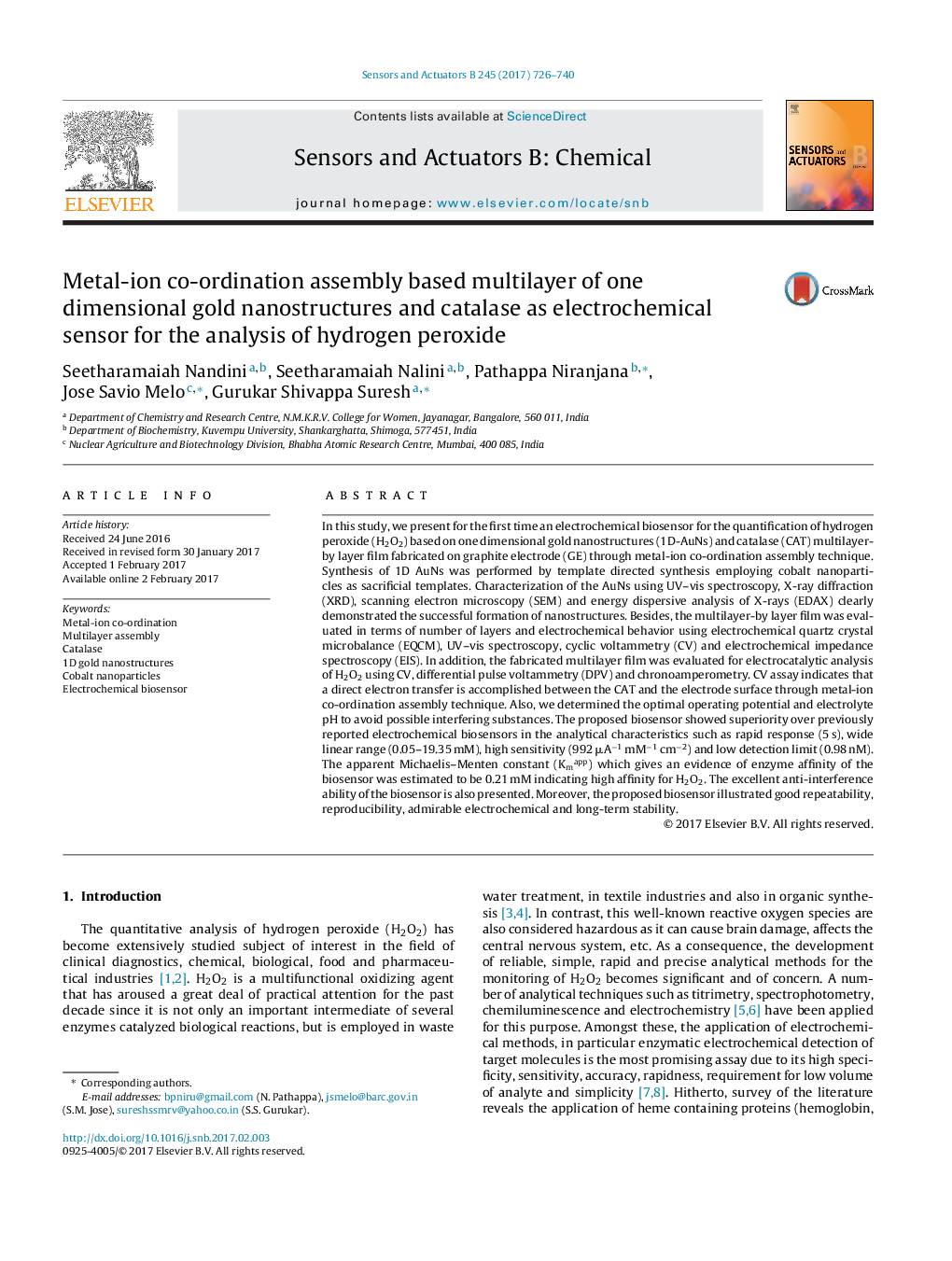| کد مقاله | کد نشریه | سال انتشار | مقاله انگلیسی | نسخه تمام متن |
|---|---|---|---|---|
| 5009940 | 1462046 | 2017 | 15 صفحه PDF | دانلود رایگان |
- Multilayer-by-layer film fabricated using metal-ion co-ordination assembly.
- Synthesis of AuNs was performed by employing cobalt nanoparticles as templates.
- Cyclic voltammetry assay indicated that a direct electron transfer is accomplished.
- The proposed biosensor showed rapid response and wide linear range.
- It also exhibited high sensitivity and low detection limit.
In this study, we present for the first time an electrochemical biosensor for the quantification of hydrogen peroxide (H2O2) based on one dimensional gold nanostructures (1D-AuNs) and catalase (CAT) multilayer-by layer film fabricated on graphite electrode (GE) through metal-ion co-ordination assembly technique. Synthesis of 1D AuNs was performed by template directed synthesis employing cobalt nanoparticles as sacrificial templates. Characterization of the AuNs using UV-vis spectroscopy, X-ray diffraction (XRD), scanning electron microscopy (SEM) and energy dispersive analysis of X-rays (EDAX) clearly demonstrated the successful formation of nanostructures. Besides, the multilayer-by layer film was evaluated in terms of number of layers and electrochemical behavior using electrochemical quartz crystal microbalance (EQCM), UV-vis spectroscopy, cyclic voltammetry (CV) and electrochemical impedance spectroscopy (EIS). In addition, the fabricated multilayer film was evaluated for electrocatalytic analysis of H2O2 using CV, differential pulse voltammetry (DPV) and chronoamperometry. CV assay indicates that a direct electron transfer is accomplished between the CAT and the electrode surface through metal-ion co-ordination assembly technique. Also, we determined the optimal operating potential and electrolyte pH to avoid possible interfering substances. The proposed biosensor showed superiority over previously reported electrochemical biosensors in the analytical characteristics such as rapid response (5 s), wide linear range (0.05-19.35 mM), high sensitivity (992 μAâ1 mMâ1 cmâ2) and low detection limit (0.98 nM). The apparent Michaelis-Menten constant (Kmapp) which gives an evidence of enzyme affinity of the biosensor was estimated to be 0.21 mM indicating high affinity for H2O2. The excellent anti-interference ability of the biosensor is also presented. Moreover, the proposed biosensor illustrated good repeatability, reproducibility, admirable electrochemical and long-term stability.
Journal: Sensors and Actuators B: Chemical - Volume 245, June 2017, Pages 726-740
